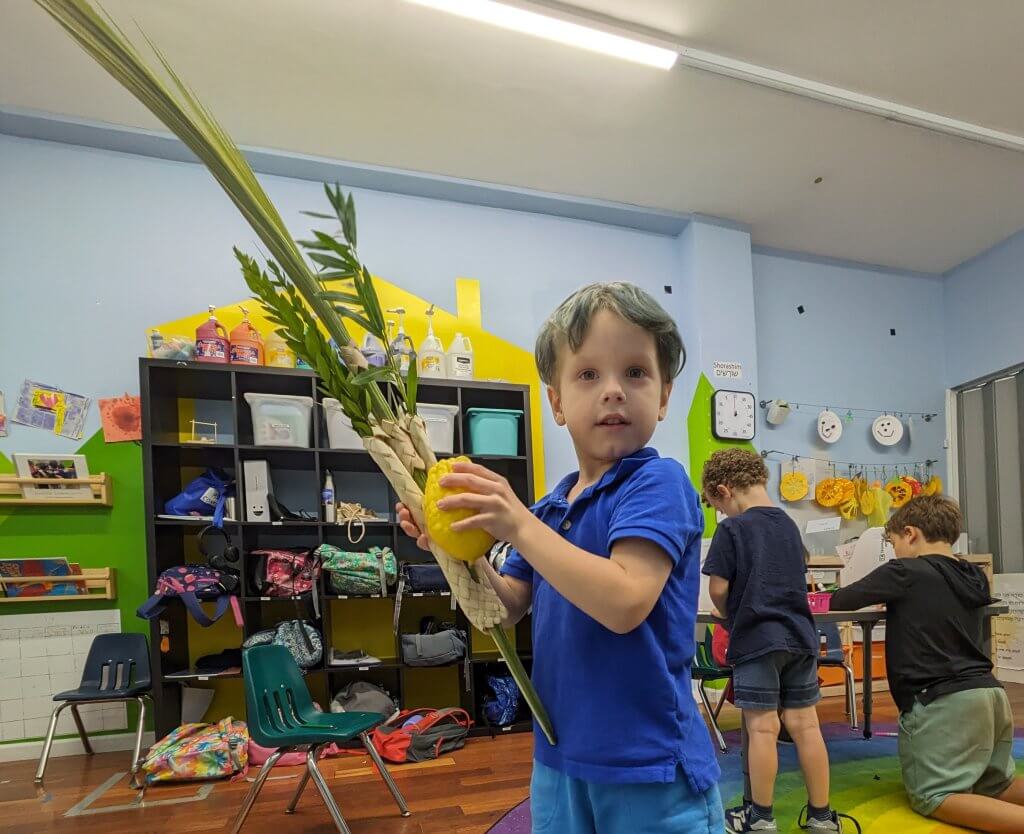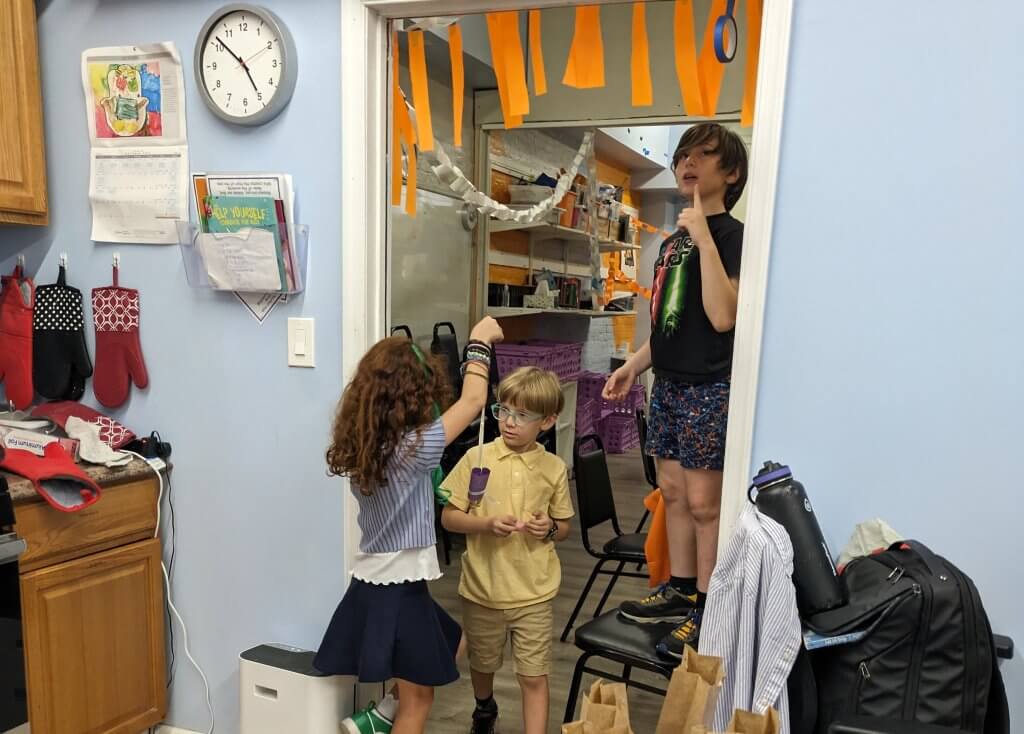
“Who wants to shake the lulav?” This wasn’t a man wearing tzitzit and a black suit on a street corner – – it was one of our Garinim (pre-K to 1st grader) learners. He was inviting his classmates to step out from their usual options of Shulchanot Avodah (project center) about Bereshit (the creation story) to participate in this special Sukkot ritual.

When we share that at Makom Community we offer 3-4 curriculum units a year, where our learners do deep text study on texts that are not always in line with the cycle of the Torah, one of the first questions we get is how do we teach the holidays? And we reply that as a five day a week program, we have the privilege and opportunity to create an immersive Jewish environment, that uses the frame of the unit to approach each holiday differently from year to year rather than the holiday being its own all-encompassing theme.
When we say immersive Jewish environment, it means that experiences, reflections, and learning all happen daily. Because our pedagogy of Jewish Placemaking does not center on googleable information, we incorporate a few key blessings, how-to ritual guides, or texts, and then prepare to celebrate and celebrate together as a Makom community and for our families at home.

The fall holidays always land during our first learning unit. During the weeks around the holidays, we always incorporate learning goals connected to that holiday through the lens of that unit. Our first unit this year is “We are Creation” where learners are examining Bereshit 1 & 2 and unpacking the idea that creation provides infinite possibilities to appreciate, build, and explore together. For example, the week leading into Sukkot, one of our learning goals around B’tzelem Elohim was, “Learners will name what special qualities they have to create in this world…” Kiddos identified and then used those special qualities to create Sukkot decorations that show their talents and skills. For example, the learners then made self portraits out of natural materials to decorate the Sukkah!
Rather than interrupting our students’ deep learning of Bereshit to focus on holidays, we wove the major ideas of the holiday into our established learning goals and the world around us. This means each year our holidays are a little different, an important aspect to model for our learners and families.
Personally, I have always struggled when we enter the fall holidays and Passover, holding on a little too tightly to traditions and expecting the holiday to look and feel like it did last year. And, that is not how our Jewish calendar or our world work. Our holidays change which secular weeks they fall on because the Jewish calendar follows the moon, with different temperatures and different signs of the seasons year to year. I am different each year, my family is different each year, and each year the holidays feel different.
And especially this year, 5784, when we entered Simchat Torah with the devastating news from Israel, it is a reminder that this time of year will surely look different for years to come. Our learners and families are immersed in an array of holiday learning and themes each year already.
And next year, I know the memories and deep feelings we are all holding now will be incorporated into our learnings, and we will once again turn to and support each other, as Jewish community sets us up to do. Immersing our Jewish holidays into our teaching and learning only better equips our learners to navigate the world they live in and to one day become adults who carry on our traditions and Jewish wisdom.
